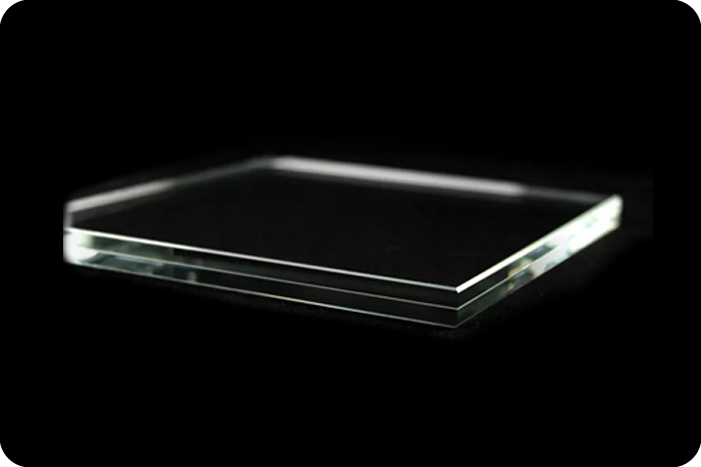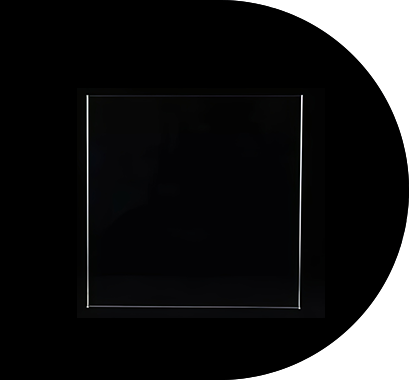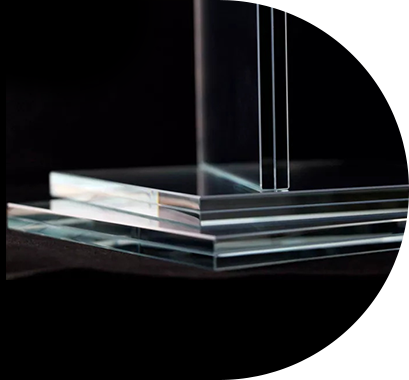In the evolving landscape of architectural design, glass has transitioned from a mere functional material to a central aesthetic and structural component. Among the many innovations that have redefined its role, low reflective laminated glass stands out as a sophisticated solution that combines visual clarity, safety performance, and environmental responsiveness. This advanced glazing technology mitigates unwanted glare and reflections while maintaining optical fidelity, making it an ideal choice for high-end façades, interior partitions, museum displays, and sensitive environments such as control rooms and digital studios.
This article explores the engineering principles behind low reflective laminated glass, its multi-functional benefits, and its growing influence across various architectural and industrial applications. From the science of anti-reflective coatings to the integration of interlayer technologies, we will examine how this material is reshaping the way designers approach transparency, light transmission, and occupant experience.
The Science Behind Low Reflective Laminated Glass
At its core, low reflective laminated glass consists of two or more glass plies bonded together with one or more interlayers—typically polyvinyl butyral (PVB), ethylene-vinyl acetate (EVA), or thermoplastic polyurethane (TPU)—to enhance strength, safety, and acoustic performance. What distinguishes this type of glass from standard laminated products is the application of specialized anti-reflective (AR) surface treatments , which significantly reduce the amount of visible light reflected off the glass surface.
The anti-reflective properties are typically achieved through either chemical etching , thin-film coating , or nanotechnology-based surface structuring . These processes manipulate the refractive index at the glass-air interface, allowing more light to pass through rather than being scattered or bounced back. As a result, the glass appears nearly invisible under normal lighting conditions, offering enhanced visibility and minimal distortion.
Optical Performance and Visual Clarity
One of the most compelling advantages of low reflective laminated glass is its ability to deliver superior optical clarity without the distracting mirror-like effects common in untreated or highly reflective glass. In environments where uninterrupted visual access is critical—such as art galleries, retail storefronts, and high-resolution display screens—the reduction of glare and reflection ensures that objects behind the glass remain clearly visible without interference from ambient light sources.
Moreover, unlike traditional tinted or coated glasses that may alter color perception or darken interiors, low reflective glass maintains neutral color rendering . This makes it particularly suitable for applications requiring accurate representation of colors and textures, including photography studios, television production sets, and conservation areas in museums.
Safety, Security, and Acoustic Benefits
Beyond its optical attributes, low reflective laminated glass retains all the inherent safety features of conventional laminated glass. In the event of breakage, the interlayer holds the glass fragments together, preventing them from scattering and reducing the risk of injury. This characteristic makes it a preferred option for use in hazard-prone locations , such as overhead glazing, balustrades, and doors.
Additionally, when combined with advanced interlayer materials, low reflective laminated glass can provide enhanced security performance , including resistance to forced entry and bullet impact. Some variants are specifically engineered to meet international standards such as EN 356 for security glazing or NIJ Level 1–3 for ballistic protection.
From an acoustic standpoint, the layered structure of laminated glass effectively dampens sound transmission. By incorporating acoustic PVB interlayers, manufacturers can tailor the glass to achieve sound insulation ratings of up to 50 dB , making it a valuable asset in urban buildings, transportation hubs, and noise-sensitive residential developments.
Energy Efficiency and Environmental Integration
Low reflective laminated glass also plays a strategic role in energy-efficient building design. By minimizing external reflections without compromising natural daylighting, it contributes to reduced reliance on artificial lighting , thereby lowering energy consumption. When integrated with low-emissivity (Low-E) coatings or insulated glass units (IGUs) , its thermal performance can be further optimized to regulate indoor temperatures and improve HVAC efficiency.
Furthermore, the reduced reflectivity of this glass helps mitigate the “glare pollution” effect—an increasingly important consideration in densely built urban environments. Excessive solar reflections from highly reflective façades can create hazardous conditions for drivers, pedestrians, and nearby structures. Low reflective glass offers a visually pleasing alternative that aligns with sustainable urban planning goals.

Design Applications Across Industries
The versatility of low reflective laminated glass has led to its adoption across a wide range of sectors:
-
Museum and Art Conservation : In display cases and protective barriers, it allows visitors to view artifacts and artworks without visual distractions, preserving both authenticity and engagement.
-
Retail and Commercial Architecture : Storefronts and window displays benefit from the near-invisible quality of the glass, drawing attention directly to the merchandise inside.
-
High-Tech Environments : Control rooms, command centers, and video conferencing facilities utilize low reflective glass to eliminate screen glare and ensure clear visibility of digital interfaces.
-
Residential Architecture : Homeowners seeking seamless outdoor connectivity often choose this glass for large sliding doors and windows, enhancing views while maintaining privacy and comfort.
-
Transportation Infrastructure : Airports, train stations, and metro systems incorporate low reflective laminated glass in signage, ticket booths, and canopy designs to improve legibility and user experience.
Sustainability and Future Development
As the construction industry continues to prioritize sustainability, the development of eco-conscious glass solutions has gained momentum. Manufacturers are now producing low reflective laminated glass using recycled glass substrates , eco-friendly interlayers , and energy-efficient coating technologies that minimize volatile organic compound (VOC) emissions during production.
Moreover, ongoing research into smart glass integration —where low reflective surfaces can be combined with electrochromic or photochromic properties—promises even greater adaptability in managing light, heat, and visual privacy dynamically. Such advancements could lead to next-generation façade systems that respond intelligently to environmental changes, further pushing the boundaries of architectural innovation.





